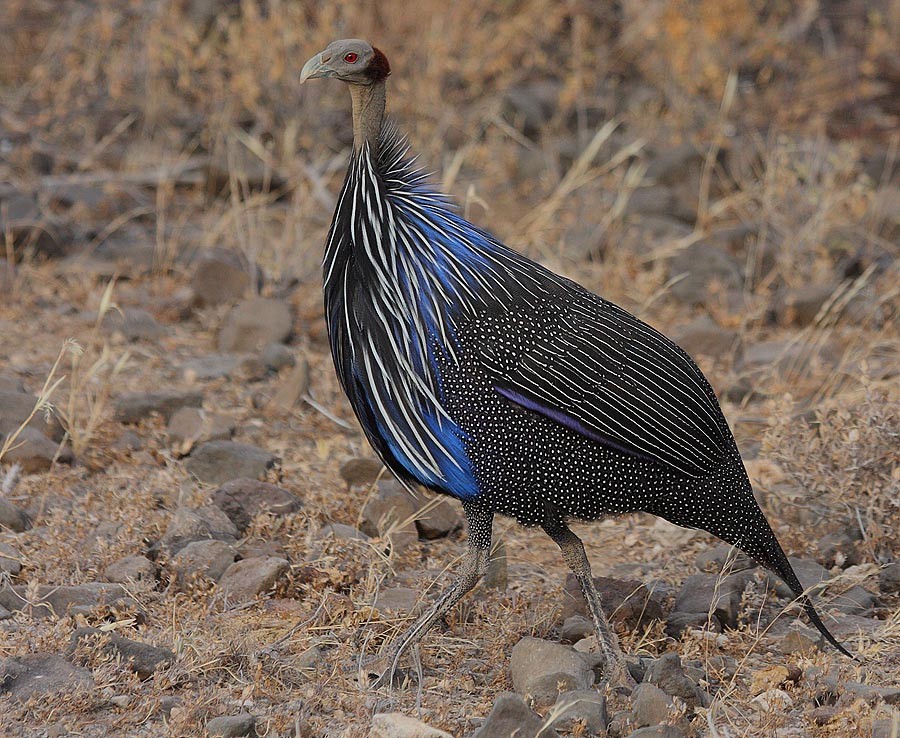Vulturine Guineafowl
A species of Guineafowl Scientific name : Acryllium vulturinum Genus : Guineafowl
Vulturine Guineafowl, A species of Guineafowl
Botanical name: Acryllium vulturinum
Genus: Guineafowl
Content
Description General Info
 Photo By Steve Garvie , used under CC-BY-SA-2.0 /Cropped and compressed from original
Photo By Steve Garvie , used under CC-BY-SA-2.0 /Cropped and compressed from original Description
The vulturine guineafowl is a large (61–71 cm) bird with a round body and small head. It has a longer wings, neck, legs and tail than other guineafowl. The adult has a bare blue face and black neck, and although all other guineafowl have unfeathered heads, this species looks particularly like a vulture because of the long bare neck and head. The slim neck projects from a cape of long, glossy, blue and white hackles. The breast is cobalt blue, and the rest of the body plumage is black, finely spangled with white. The wings are short and rounded, and the tail is longer than others in the family Numididae. The sexes are similar, although the female is usually slightly smaller than the male and with smaller tarsal spurs. Young birds are mainly grey-brown, with a duller blue breast and short hackles. 
Size
72 cm
Life Expectancy
10-15 years
Nest Placement
Ground
Feeding Habits
Vulturine Guineafowl consumes seeds, leaves, berries, fruit, roots, and bulbs, often foraging on the ground. Distinctive for its extensive diet, this species adapts feeding times to availability, exhibiting flexible foraging behaviors.
Habitat
Vulturine Guineafowl predominantly inhabits semi-arid regions characterized by Acacia or Commiphora thorn scrub, interspersed with grasslands that feature trees and shrubs. These birds are adapted to arid and semi-arid plateau landscapes, often with a preference for regions composed of red soil. Their habitat extends to montane forests and tall riverine Acacia woodlands, where they may venture into dense thickets, especially in zones where they coexist with other guineafowl species. Vulturine Guineafowl is also known to occupy elevations up to 1900 meters above sea level.
Dite type
Omnivorous
General Info
Feeding Habits
Bird food type
Behavior
The vulturine guineafowl is a gregarious species, forming flocks outside the breeding season typically of about 25 birds. This species' food is seeds and small invertebrates. This guineafowl is terrestrial and will run rather than fly when alarmed. Despite the open habitat, it tends to keep to cover, and roosts in trees. It makes loud chink-chink-chink-chink-chink calls. It breeds in dry and open habitats with scattered bushes and trees, such as savannah or grassland. It usually lays 4–8 cream-coloured eggs in a well-hidden grass-lined scrape. 
Species Status
Not globally threatened.